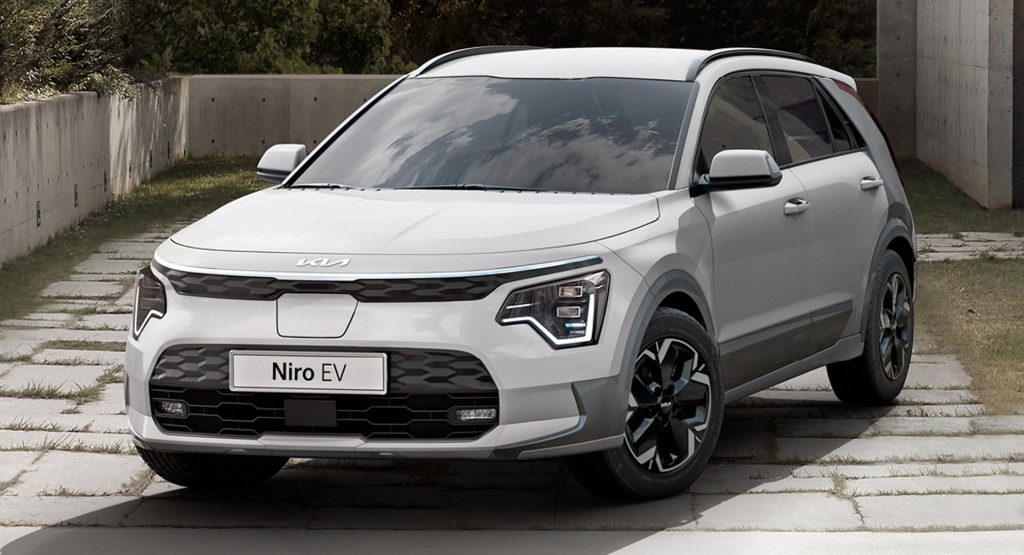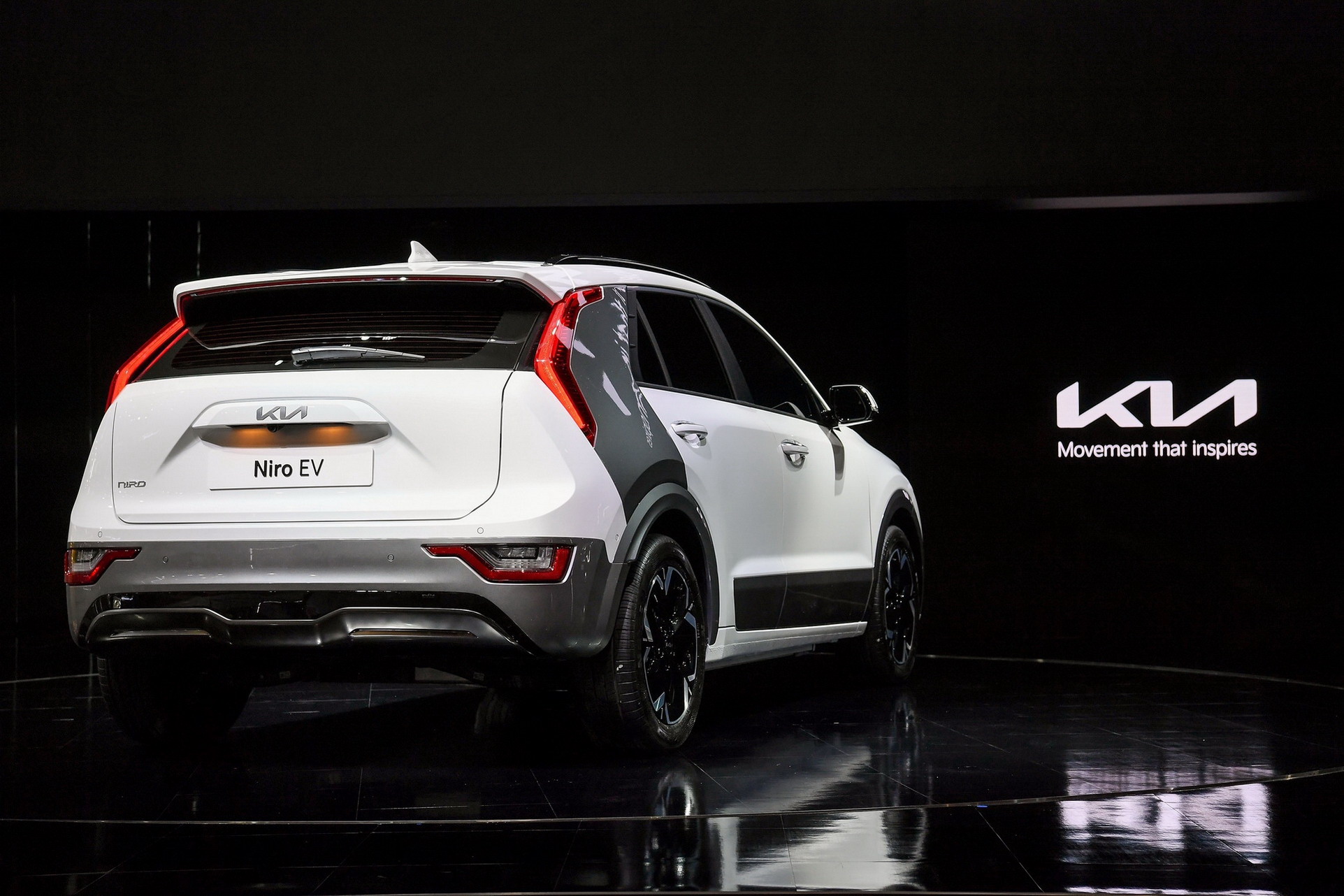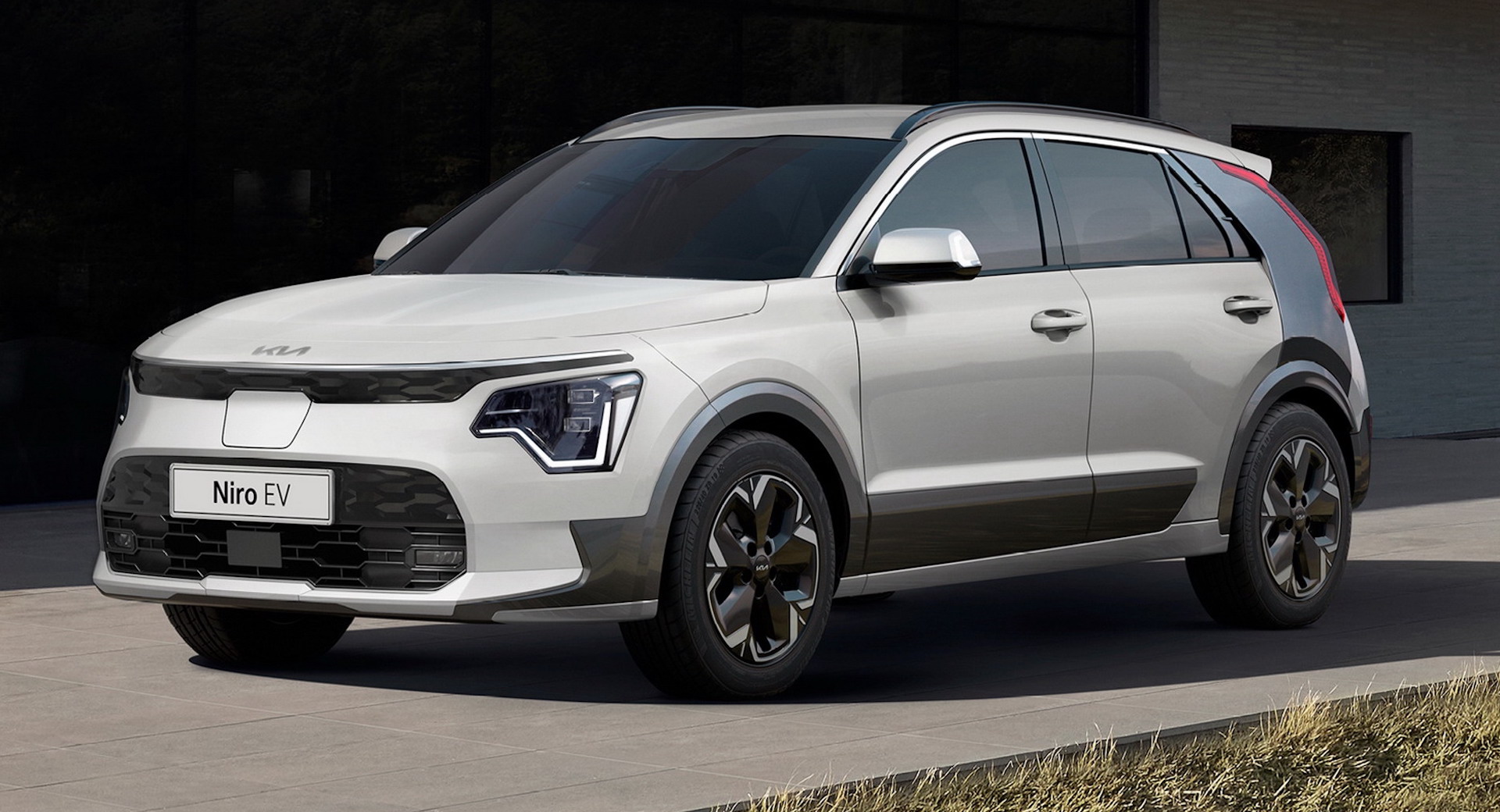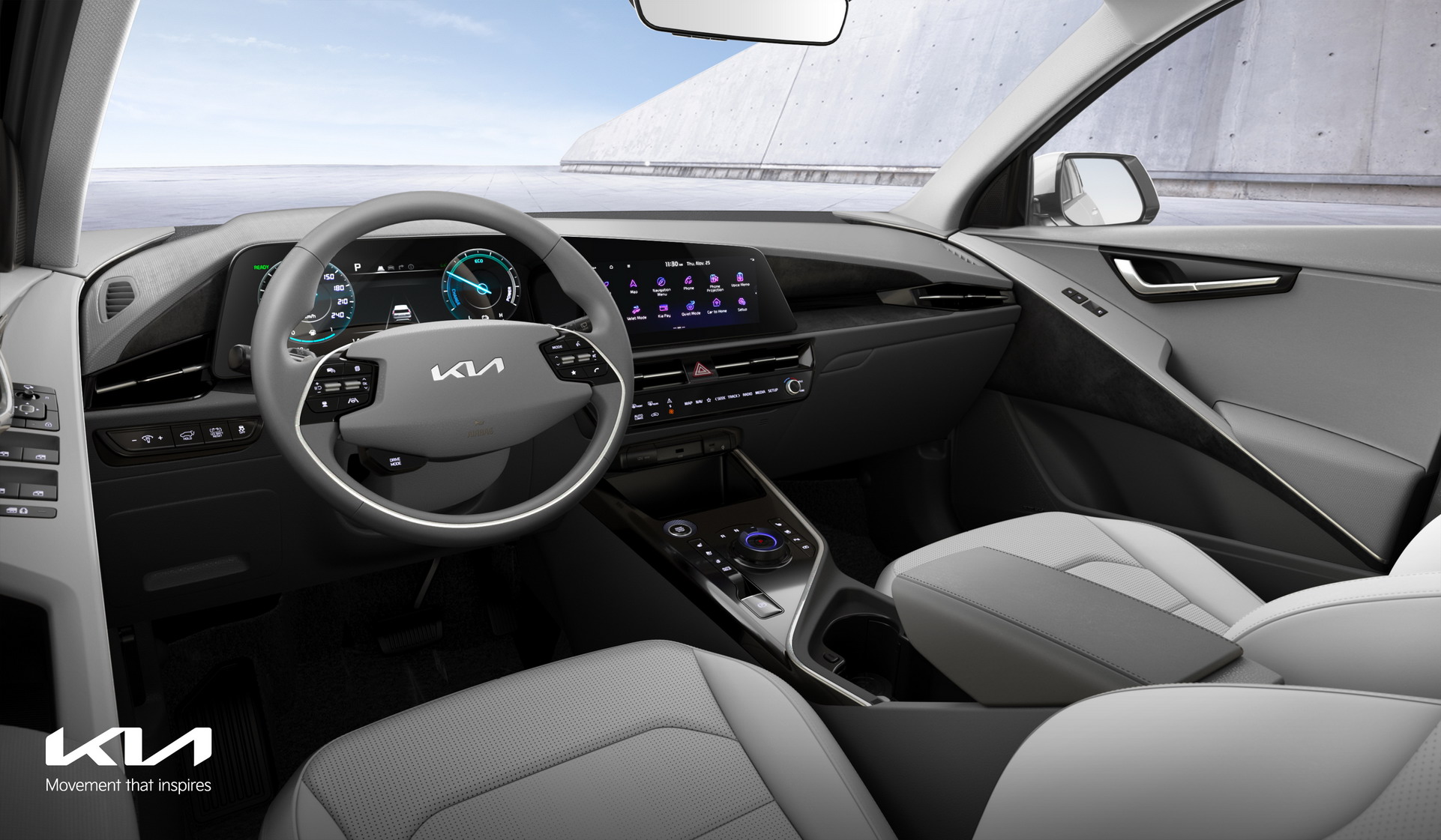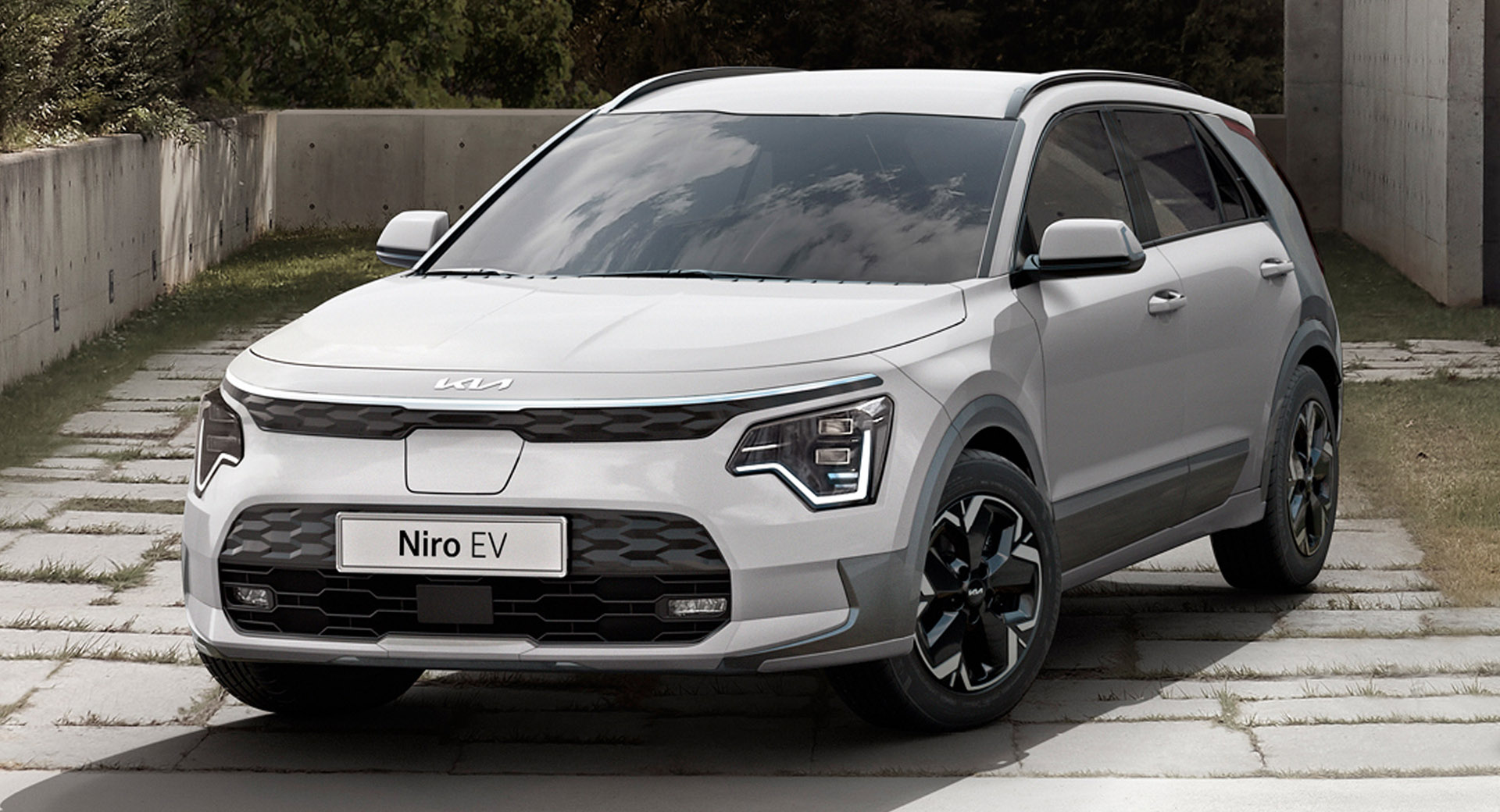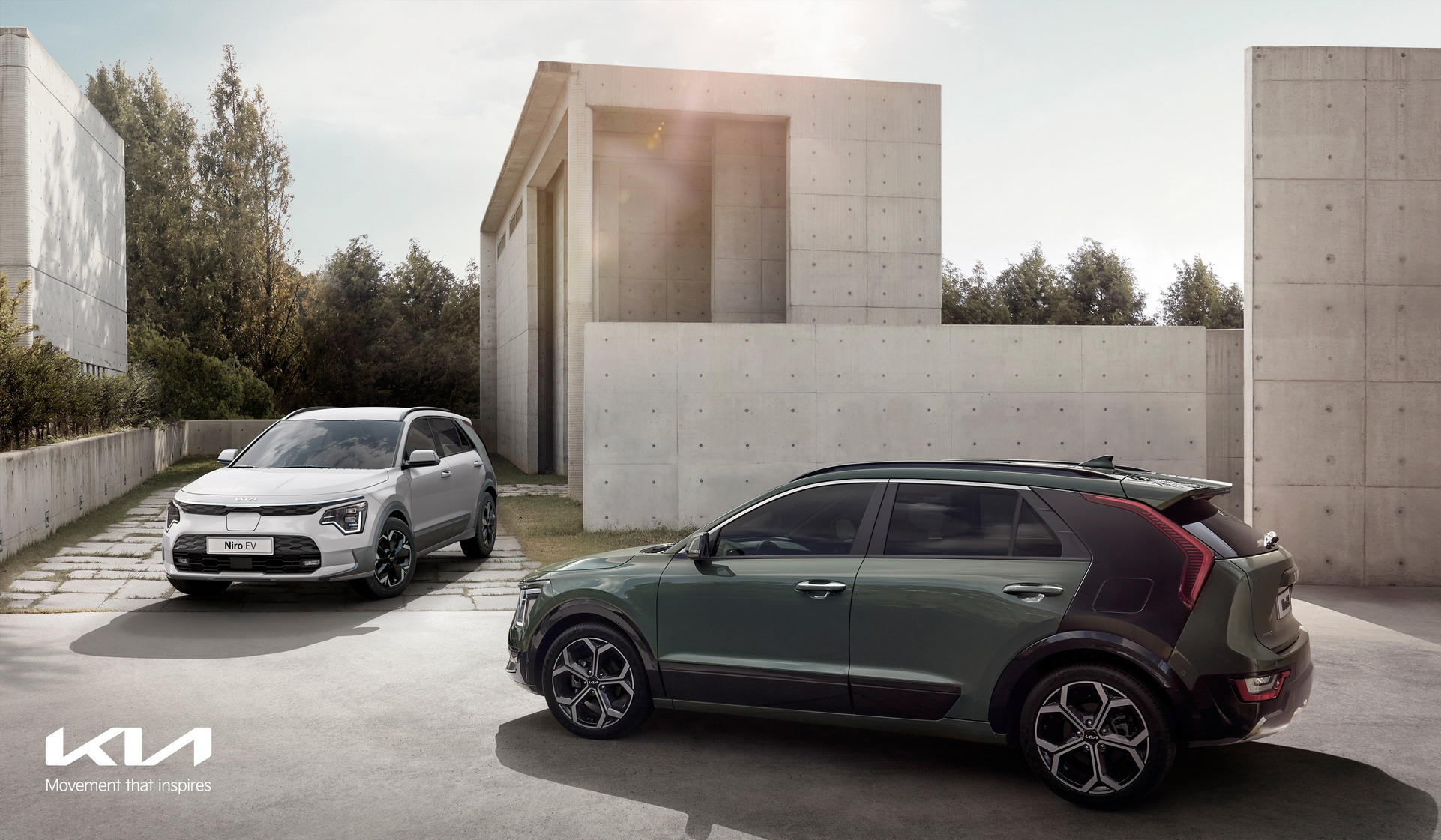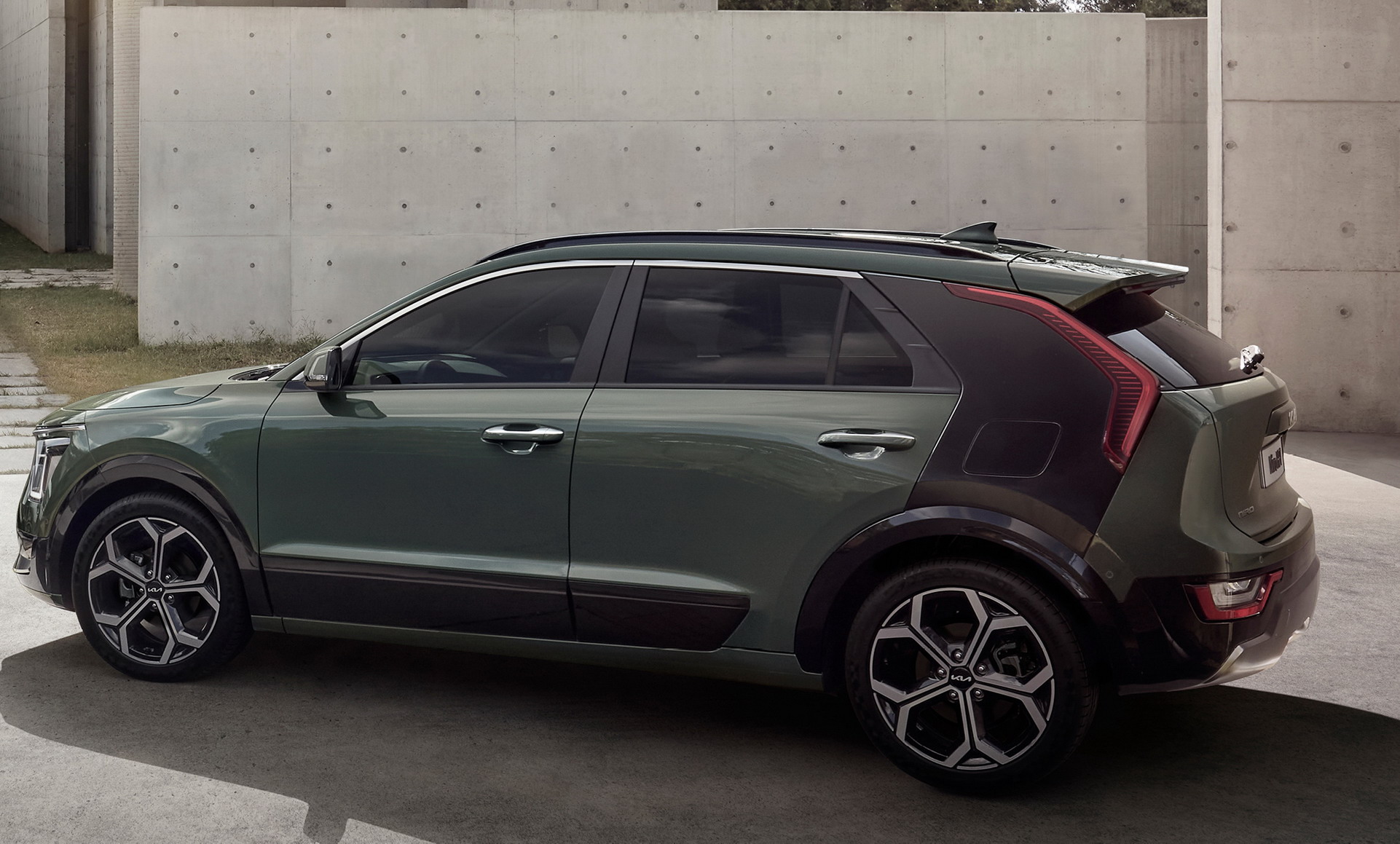Kia unveiled the second-generation Niro in November 2021 but we had to wait until January 2022 for the Niro Hybrid specifications. Now, Kia Sweden is the first to publish details of the Niro Plug-in Hybrid and the Niro EV variants.
While the Niro Hybrid’s power output is an unchanged 139 hp (104 kW / 141 PS), the plug-in hybrid version gets a modest power bump. The PHEV system comprises the Smartstream 1.6-litre GDI four-cylinder engine and a new electric motor producing 83 hp (62 kW / 84 PS), instead of 60 hp (44.5 kW / 61 PS) in the old model. Thus, the combined output is 182 hp (136 kW / 185 PS), representing a 43 hp (32 kW / 44 PS) increase over the outgoing Niro PHEV. Another important upgrade is the larger 11.1 kWh lithium-ion battery (up from 8.9 kWh) which allows a longer electric range of up to 60 km (37 miles), according to preliminary data.
Read Also: 2023 Kia Sportage PHEV Plugs Into A More Powerful Battery Offering 32 Miles Of Electric Range
As for the Kia Niro EV, this one uses an electric motor producing 201 hp (150 kW / 204 PS) and 255 Nm (188 lb-ft) of torque. The power is identical with the previous generation although torque is lower since the outgoing model had 395 Nm (291 lb-ft). The battery has the same capacity of 64.8 kWh allowing an electric range of 463 km (288 miles) which is 9 km (6 miles) more than its predecessor. In a fast charger and under optimal conditions, the EV’s battery can go from 10 to 80% in 43 minutes. Kia didn’t reveal charging times from a standard home outlet. The outgoing e-Niro was also available in a cheaper version with a smaller battery and a less powerful engine but we don’t know if this spec will survive in the new model’s range.
Kia has only shown photographs of the Niro Hybrid and Niro EV variants which spot unique front bumpers and different wheels. The EV has a smaller central intake will less black trim around it and an additional charging port beneath the grille. We don’t know if the Niro Plug-in Hybrid gets the same design as its fully electric sibling or if Kia designers have opted for small alterations.
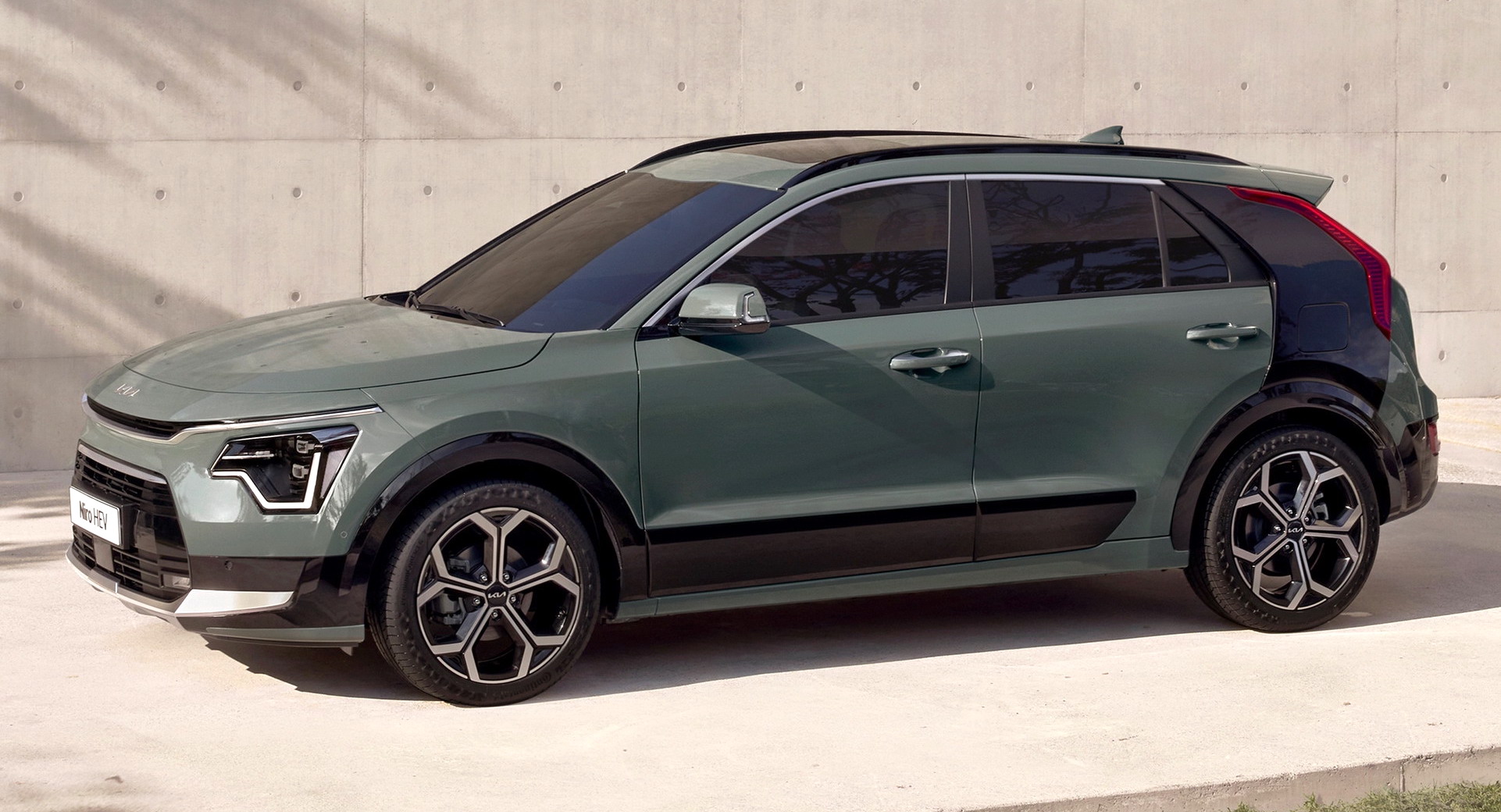
The Niro Hybrid (below) has a slightly different design than the Niro EV (above) in terms of the front bumper. Kia hasn’t shown us the Niro Plug-in Hybrid yet.
The second-generation Kia Niro is based on a heavily updated version of its predecessor’s architecture with optimized steering and suspension setup. All variants are measuring 4,420 mm (174 inches) long, 1,825 mm (71.85 inches) wide, and 1,545 mm (60.82 inches) tall, with a wheelbase of 2,720 mm (107 inches) which represents an increase of 65 mm (2.5 inches) in length, 20 mm (0.78 inches) in width, 10 mm (0.39 inches) in height, and an extra 20 mm (0.78 inches) for the wheelbase over the outgoing model.
The larger exterior dimensions result in a more spacious cabin with increased legroom for the rear passengers. Cargo space varies depending on the powertrain type, with a capacity of 451 lt (15.9 cubic feet) in the Hybrid, a more modest 348 lt (12.3 cubic feet) in the Plug-in Hybrid, and a more generous 495 lt (17.5 cubic feet) in the EV when you include the 20-liter (0.7 cubic feet) frunk.
In Sweden, the Niro is available in three trim levels – Action, Advance, and Advance Plus. The dual 10.25-inch screens with navigation and reversing camera are standard in all models, as with various ADAS including the Highway Driving Assist. The mid-spec Advance adds synthetic leather upholstery, ventilated seats, Harman Kardon sound system, active blind-spot warning, and electric tailgate, while the flagship Advance Plus adds more features like the heads-up display, remote parking, a sleep-mode passenger seat, and wireless charging.
The Kia Niro is already available to order in Sweden, with prices starting from SEK 334,400 for the Hybrid, SEK 396,900 for the Plug-in Hybrid, and SEK 495,900 for the EV. All variants of the model will roll out in Europe during the first quarter of 2022.
H/T to CarExpert.com.au




